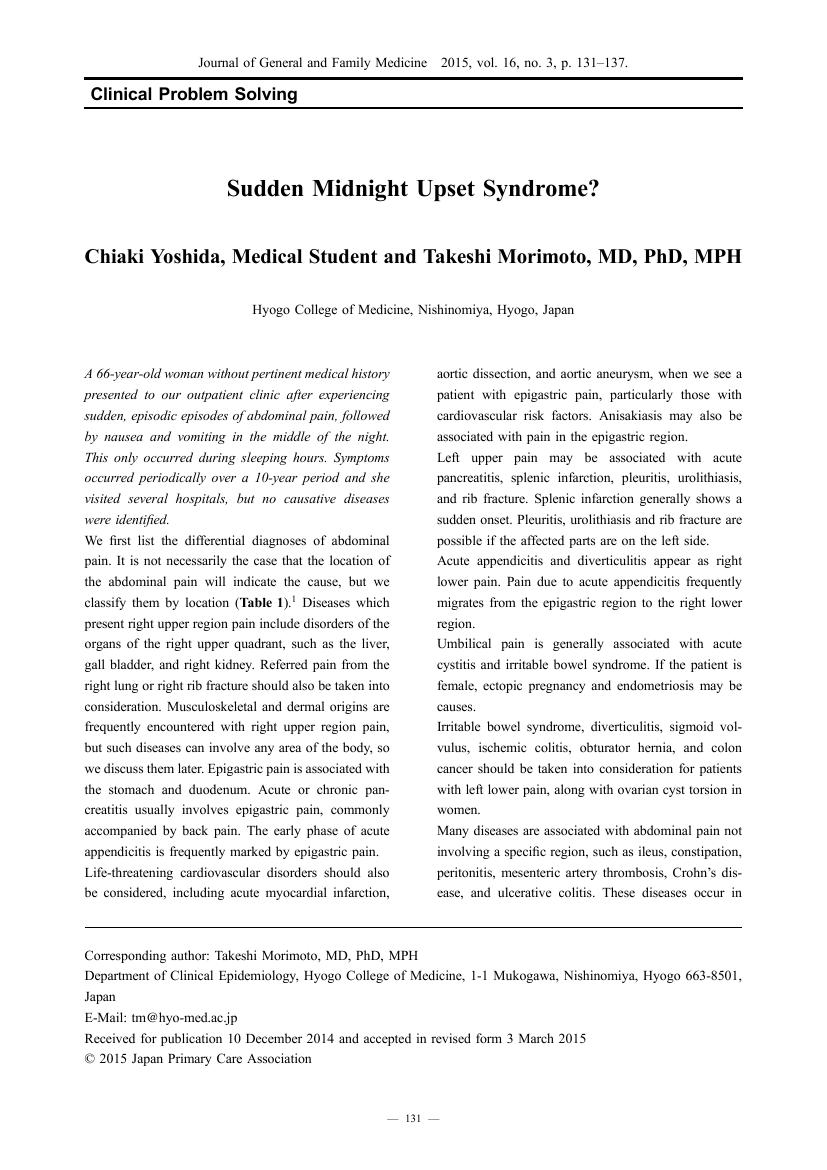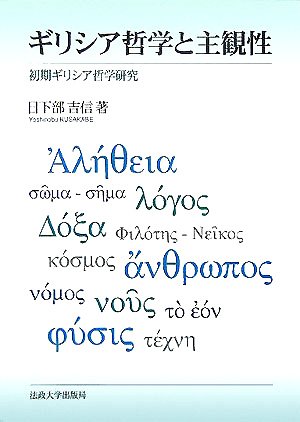1 0 0 0 ルーブリック評価における項目反応理論
- 著者
- 宇都 雅輝 植野 真臣
- 出版者
- The Institute of Electronics, Information and Communication Engineers
- 雑誌
- 電子情報通信学会論文誌 D (ISSN:18804535)
- 巻号頁・発行日
- vol.J103-D, no.5, pp.459-470, 2020-05-01
近年,学習者の実践的かつ高次な能力を測定する手法の一つとしてルーブリック評価が注目されている.ルーブリックは評価者の主観による評価基準をより客観的にするためのツールであるが,それでも評価がパフォーマンス課題や評価者,ルーブリックの評価観点の特性に依存してしまうことが指摘されてきた.この問題を解決する手法の一つとして,これらの特性を考慮して学習者の能力を測定できる項目反応モデルが近年多数提案されている.しかし,既存モデルは学習者・課題・評価者・評価観点で構成される4相の評価データに直接には適用できず,課題・評価者・評価観点の特性を同時に考慮した能力測定は実現できない.また,ルーブリック評価の評点は一般に段階カテゴリーとして与えられ,各カテゴリーに対する評価基準は評価者と評価観点の特性に依存する.しかし,既存モデルでは評価基準は評価者と評価観点のいずれか一方にのみ依存すると仮定している.以上の問題を解決するために,本論文では,評価観点と評価者の評価基準を考慮して,ルーブリック評価の4相データから学習者の能力を測定できる新たな項目反応モデルを提案する.また,シミュレーション実験と実データ実験を通して提案モデルの有効性を示す.
1 0 0 0 OA 杉浦康平デザインの動向とエディトリアルデザイン概念の成立についての研究
- 著者
- 赤崎 正一 戸田 ツトム 寺門 孝之 小山 明 黄 國賓 Shoichi AKAZAKI Tztom TODA Takayuki TERAKADO Akira KOYAMA Kuo-pin HUANG
- 出版者
- 神戸芸術工科大学
- 雑誌
- 芸術工学2013
- 巻号頁・発行日
- 2013-11-25
本研究は杉浦康平名誉教授の1950年代からはじまるデザイン活動の包括的な研究を目指すものである。就中、1970年代~ 80年代の杉浦名誉教授の活動を中心に成立したと思われる「エディトリアルデザイン」概念の成立過程の検証を重点的な目的とする。本研究の基盤をなすものとして2011 年度後半に相次いで開催された「脈動する本」展(武蔵野美術大学美術館)、「メタボリズムの未来都市」展(森美術館)などで明示的になった、1960 年世界デザイン会議を契機に展開した戦後デザインの爆発的な拡張の様相への再認識がある。当時の日本デザイン界全体の沸騰の中にあっても、とりわけて実験的であり続けた、杉浦デザインの現代までにいたる50 ~ 60 年の実践活動の内実を、「エディトリアルデザイン」をキー概念として調査・研究する。以下が研究(平成24年度)の具体的な活動の細目となる。1)杉浦デザインによるポスターの収集(500 ~ 600 種程度)と整理・分析→ 1次リスト完成→さらなる整理継続中。2)杉浦名誉教授による2002年度視覚情報デザイン学科講義映像記録の整理編集→ 1次編集完成→記録映像アーカイブ化のための準備中。3)杉浦名誉教授によるレクチャーをふくむ研究会の開催→ 2度にわたって実施→レクチャー記録整理中。
1 0 0 0 OA ジーンズ生地における綾組織と撚の関係
- 著者
- 書上 誠之助 川端 春江 田口 米子
- 出版者
- 一般社団法人 日本繊維製品消費科学会
- 雑誌
- 繊維製品消費科学 (ISSN:00372072)
- 巻号頁・発行日
- vol.25, no.6, pp.301-307, 1984-06-25 (Released:2010-09-30)
- 参考文献数
- 3
服飾界において主要な地位を占めるようになったジーンズは, 素材生地としても興味ある要素を含んでいる.この中で綾線と撚線の関係について研究した.この結果, 原糸の撚とそのトルクが, 織物組織構成上主要な因子となることがわかった.なお組織の投影図がこの問題解明に役立った.
1 0 0 0 OA 人工股関節全置換術後の股関節外転運動時の臥位姿勢の違いが術後機能に及ぼす影響
- 著者
- 池松 幸二 神野 哲也 加地 啓介 竹井 仁
- 出版者
- 理学療法科学学会
- 雑誌
- 理学療法科学 (ISSN:13411667)
- 巻号頁・発行日
- vol.33, no.6, pp.959-964, 2018 (Released:2018-12-21)
- 参考文献数
- 25
〔目的〕THA後の股関節外転運動で臥位姿勢の違いが,筋力・筋活動・疼痛に及ぼす影響を検討すること.〔対象と方法〕THAを施行する20名を対象とし,筋力・筋活動・疼痛の測定を術前・術後3日・術後10日に行った.背臥位群と腹臥位群に振り分け,術後理学療法において,最大努力での静止性両側股関節外転運動を行った.〔結果〕股関節外転運動時の大腿筋膜張筋の筋活動は,背臥位群より腹臥位群で低かった.歩行時の中殿筋活動開始時期で交互作用を認め,術後3日では両群で術前より遅くなったが,術後10日では背臥位群より腹臥位群で早くなった.〔結語〕歩行時の中殿筋活動開始時期は THA後に遅くなるが, 腹臥位での股関節外転運動は背臥位での股関節外転運動より, 中殿筋活動開始時期を早めた.
1 0 0 0 OA 潜在指紋検出用有機粉末の開発
- 著者
- 高津 正久 福島 正雄 Ulrich Gerber
- 出版者
- 日本法科学技術学会
- 雑誌
- 日本鑑識科学技術学会誌 (ISSN:13428713)
- 巻号頁・発行日
- vol.6, no.1, pp.57-63, 2001 (Released:2009-11-27)
- 参考文献数
- 7
Numerous kinds of fingerprint powder such as aluminum flake have been successfully used for latent fingerprint detection in crime scene investigation. These fingerprint powders are hazardous to human health, especially for crime scene investigators, and sometimes seriously damage valuable furniture, electronic devices and precision instruments. In this paper, dogtooth violet starch, wheat flour, black tea, green tea, green laver were ground into fine particles less than 80 micrometers using a ball mill grinder. The shape of these fine powders were observed by scanning electron microscope (SEM), and their adherence to the skin ridge deposits was evaluated. Each powder detected a latent fingerprint 4 hours after imprinting on a glass plate, but they did not give good results for older or weaker fingerprints. Green laver, which is a marine plant of the green algae family, has a single cell layer structure. An improved green laver powder, produced by freeze-drying followed by grinding, contains a remarkable amount of thin plate particles. This characteristic feature of the improved green laver powder made it more adhesive, revealing even weak latent fingerprints 3 days after imprinting on a glass plate. The quality of lifted fingerprints was good enough to be used for fingerprint identification.
1 0 0 0 奈良盆地における住宅地形成の解析
1 0 0 0 OA 米麹中のα-グルコシダーゼ活性の測定法
- 著者
- 今井 泰彦 徳武 昌一 山次 信幸 鈴木 勝
- 出版者
- 公益財団法人 日本醸造協会
- 雑誌
- 日本醸造協会誌 (ISSN:09147314)
- 巻号頁・発行日
- vol.92, no.4, pp.296-302, 1997-04-15 (Released:2011-09-20)
- 参考文献数
- 12
- 被引用文献数
- 4 6
米麹中のα-グルコシダーゼ活性測定法について検討した。PNPGを基質とし, 反応pHを4.0で行うことにより, 最適な条件で測定することができた。添加回収試験の結果は99.4%, 再現性のCV値は2%未満と良好であった。この基質には麹菌のグルコアミラーゼおよびα-アミラーゼは作用しなかったが, 試料中に含まれるグルコース, G2により影響を受け, 見かけ上測定値が少し低下した。さらに, G2-PNPを用いた糖化力測定法と組み合わせて, 米麹抽出液中のグルコアミラーゼ活性とα-グルコシダーゼ活性を精度よく分別定量することができた。
1 0 0 0 OA Sudden Midnight Upset Syndrome?
- 著者
- Chiaki Yoshida Takeshi Morimoto
- 出版者
- Japan Primary Care Association
- 雑誌
- Journal of General and Family Medicine (ISSN:21896577)
- 巻号頁・発行日
- vol.16, no.3, pp.131-137, 2015-09-20 (Released:2015-10-30)
- 参考文献数
- 5
1 0 0 0 OA 海外浮世絵所在索引
- 出版者
- 国際日本文化研究センター
- 雑誌
- 海外浮世絵所在索引
- 巻号頁・発行日
- 1996-03-31
1 0 0 0 OA SHUNGA : Ten Questions and Answers
1 0 0 0 ギリシア哲学と主観性 : 初期ギリシア哲学研究
1 0 0 0 都市計画における規制緩和と都市環境改善の可能性
- 著者
- 司波 寛
- 出版者
- 日本都市計画学会
- 雑誌
- 都市計画 (ISSN:04959280)
- 巻号頁・発行日
- vol.44, no.2, pp.15-19, 1995-07-31
1 0 0 0 OA 幣原喜重郎の国際認識 -第一次世界大戦後の転換期を中心として-
- 著者
- 西田 敏宏
- 出版者
- JAPAN ASSOCIATION OF INTERNATIONAL RELATIONS
- 雑誌
- 国際政治 (ISSN:04542215)
- 巻号頁・発行日
- vol.2004, no.139, pp.91-106,L12, 2004-11-29 (Released:2010-09-01)
- 参考文献数
- 48
The most prominent champion of internationalism in prewar Japan was Foreign Minister Shidehara Kijuro, who led Japanese diplomacy from the mid 1920s to the early 1930s. However, Shidehara's policy, while based on international cooperation, was sometimes inclined toward unilateralism. How can we explain this contradiction?In order to answer this question, this paper analyzes Shidehara's perception of Japan's position in the world, particularly in East Asia, where Japanese foreign policy was mainly pursued. This paper focuses on the period during and after World War I. For this was an important formative period for Shidehara's policy of international cooperation: It was a time when Japan faced radical changes within its diplomatic circumstances and eventually began to pursue a policy of international cooperation, which became predominant in the 1920s. It was also a time when Shidehara, Vice-Minister of Foreign Affairs in 1915-19 and then Ambassador to the United States until 1922, played an increasingly important role in leading Japanese diplomacy, thus establishing himself as leader of the new policy of internationalism.The main idea of this paper is that Shidehara had a strong conviction that Japan was in a special position in East Asia. During World War I, Shidehara pursued a policy of demanding from the Great Powers recognition of Japan's superior position in China. The underlying assumption of this policy was that Japan, unlike other powers, had vital interests in Chinese affairs, and Shidehara began not to doubt that assumption. After the war, Shidehara fairly successfully adapted himself to the worldwide trend toward international cooperation, abandoning the imperialistic policy of the past. He played a pivotal role in the rapprochement between the United States and Japan as one of the delegates at the Washington Conference of 1921-22. Shidehara, however, continued to hold the belief concerning Japan's special position in East Asia, which he declared at that very conference.Shidehara himself believed that the perception of Japan's special position in East Asia was compatible with the policy of international cooperation. Yet in reality the former would turn out to be an important constraint on the latter. Shidehara's perception of Japan's position in East Asia noted in this paper also meant putting a limit on internationalism in prewar Japan.
1 0 0 0 惑星科学 はやぶさ微粒子が語る波乱の小惑星史
- 著者
- 中島 林彦
- 出版者
- 日経サイエンス ; 1990-
- 雑誌
- 日経サイエンス (ISSN:0917009X)
- 巻号頁・発行日
- vol.46, no.10, pp.60-67, 2016-10
1 0 0 0 IR 真性テ形現象(タイプA方言)の音韻的説明
- 著者
- 小野 浩司
- 出版者
- 佐賀大学文化教育学部
- 雑誌
- 佐賀大学文化教育学部研究論文集 (ISSN:13479601)
- 巻号頁・発行日
- vol.12, no.2, pp.145-156, 2008-01
- 著者
- 阿部 公彦
- 出版者
- 集英社
- 雑誌
- すばる (ISSN:03876381)
- 巻号頁・発行日
- vol.42, no.4, pp.140-150, 2020-04
1 0 0 0 OA 釈教歌の方法と文体
- 著者
- 平野 多恵
- 出版者
- 日本文学協会
- 雑誌
- 日本文学 (ISSN:03869903)
- 巻号頁・発行日
- vol.63, no.7, pp.21-34, 2014-07-10 (Released:2019-07-20)
釈教歌が盛行しはじめる平安時代中期から、釈教歌には二つの文体があった。一つは、漢訳仏典を和語に翻訳して詠むことで、もう一つは漢語による仏教語をそのまま詠み込むことである。前者は経典の内容を詠む法文歌に見られる。当初は経典内容の叙述に詠み手の解釈や心情を加えた二元的構造の歌が多かったが、後に四季の叙景歌や恋歌そのものへと変化した。後者は僧侶の法縁歌・述懐歌に特徴的で、伝教大師や弘法大師などの高僧の伝承歌を始発とする。和語の使用を原則とする和歌が仏教語を許容したのは、当時の和歌が翻訳不可能な仏教語の力を必要としたからだろう。
1 0 0 0 世界測地系への円滑な移行
- 著者
- 村上 真幸 仙石 新
- 出版者
- 日本測地学会
- 雑誌
- 測地学会誌 (ISSN:00380830)
- 巻号頁・発行日
- vol.53, no.1, pp.1-12, 2007
This paper describes the background of, and the necessity for the transition of the Japanese national geodetic datum from Tokyo Datum to the geocentric geodetic datum (or world geodetic system). Historically, the shape and scale of an earth ellipsoid have become accurately determined with the development of artificial satellites and laser ranging technique, and the position of an earth ellipsoid relative to the earth has been accurately determined by space geodetic techniques such as VLBI, SLR and GPS. As a result, at the end of the twentieth cen tury, geocentric geodetic datums, ITRF and WGS 84, were established and many international organizations recommend adopting ITRF or WGS 84 as the standard datum. Recent prevail ing use of GPS in surveying and navigation reveals the difference between traditional datum and geocentric datum to users of maps and charts. To leave the difference as it is would make confusion and could cause an accident if one makes positioning by GPS based on geocentric datum while using maps/charts based on traditional datum. Transition of datum from traditional one to geocentric one appears inevitable. Two governmental organizations, the Geographical Survey Institute (GSI) and the Hydrographic and Oceanographic Department of Japan Coast Guard (JHOD) made much effort to realize a new Japanese geodetic datum basedon a geocentric datum and develop maps and charts (both paper-based and digital ones) referenced to the new datum. They also collaborated to have relevant laws (Survey Act and Law for Hydrographic Activities) to be amended which regulate the geodetic datum to be used in Japan. The amended laws became effective on April 1, 2002, and the datum change was propagated among Japan without serious troubles owing to extensive preparations.

